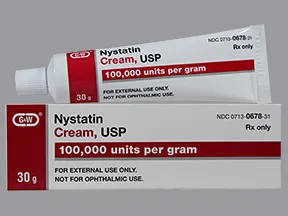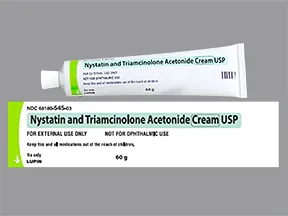

Nystatin also impacts cell membrane potential and transport by lipid peroxidation. This is the effect that accounts for the nephrotoxicity observed when high serum levels of nystatin are achieved. However, many of the systemic/toxic effects of nystatin in humans are attributable to its binding to mammalian sterols, namely cholesterol. Ergosterol is a sterol unique to fungi, so the drug does not have such catastrophic effects on animals or plants. When present in sufficient concentrations, it forms pores in the membrane that lead to K + leakage, acidification, and death of the fungus. It binds to ergosterol, a major component of the fungal cell membrane. Like amphotericin B and natamycin, nystatin is an ionophore. Rash, itching, burning and acute generalized exanthematous pustulosis.Hypersensitivity reactions, including Stevens–Johnson syndrome in some cases.Rarely, tachycardia, bronchospasm, facial swelling, muscle achesīoth the oral suspension and the topical form can cause:.The oral suspension form produces a number of adverse effects including but not limited to: Adverse effects īitter taste and nausea are more common than most other adverse effects. On occasion, serum levels of the drug can be identified from oral, vaginal, or cutaneous administration, and lead to toxicity. As it is not absorbed from the gut, it is fairly safe for oral use and does not have problems of drug interactions. It is prescribed in 'units', with doses varying from 100,000 units (for oral infections) to 1 million (for intestinal ones).
#Nystatin cream vagina license#
In the UK, its license for treating neonatal oral thrush is restricted to those over the age of one month. Additionally, liposomal nystatin appears to cause fewer cases of and less severe nephrotoxicity than observed with amphotericin B. Cryptococcus is also sensitive to nystatin. It offers an intriguing possibility for difficult-to-treat systemic infections, such as invasive aspergillosis, or infections that demonstrate resistance to amphotericin B. Liposomal nystatin is not commercially available, but investigational use has shown greater in vitro activity than colloidal formulations of amphotericin B, and demonstrated effectiveness against some amphotericin B-resistant forms of fungi. It has been found to reduce the rate of invasive fungal infections and also reduce deaths when used in these babies. It is also used in very low birth-weight (less than 1500 g or 3 lb 5oz o) infants to prevent invasive fungal infections, although fluconazole is the preferred treatment. It is effective in treating oral candidiasis in elderly people who wear dentures. It has been investigated for use in patients after liver transplantation, but fluconazole was found to be much more effective for preventing colonization, invasive infection, and death. Oral nystatin is often used as a preventive treatment in people who are at risk for fungal infections, such as AIDS patients with a low CD4 + count and people receiving chemotherapy. When given parenterally, its activity is reduced due to presence of plasma.


#Nystatin cream vagina skin#
Infections of nails or hyperkeratinized skin do not respond well. Skin, vaginal, mouth, and esophageal Candida infections usually respond well to treatment with nystatin. In 2020, it was the 227th most commonly prescribed medication in the United States, with more than 2 million prescriptions. It is made from the bacterium Streptomyces noursei. It is on the World Health Organization's List of Essential Medicines. It was the first polyene macrolide antifungal. Nystatin was discovered in 1950 by Rachel Fuller Brown and Elizabeth Lee Hazen. It works by disrupting the cell membrane of the fungal cells. During pregnancy use in the vagina is safe while other formulations have not been studied in this group. Common side effects when taken by mouth include vomiting and diarrhea. Ĭommon side effects when applied to the skin include burning, itching, and a rash. Nystatin may be used by mouth, in the vagina, or applied to the skin. It may also be used to prevent candidiasis in those who are at high risk. It is used to treat Candida infections of the skin including diaper rash, thrush, esophageal candidiasis, and vaginal yeast infections. Nystatin, sold under the brandname Mycostatin among others, is an antifungal medication.


 0 kommentar(er)
0 kommentar(er)
